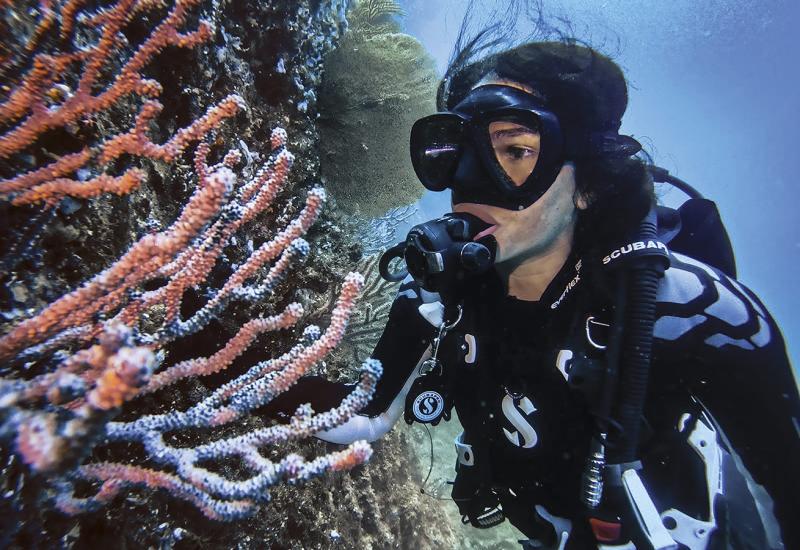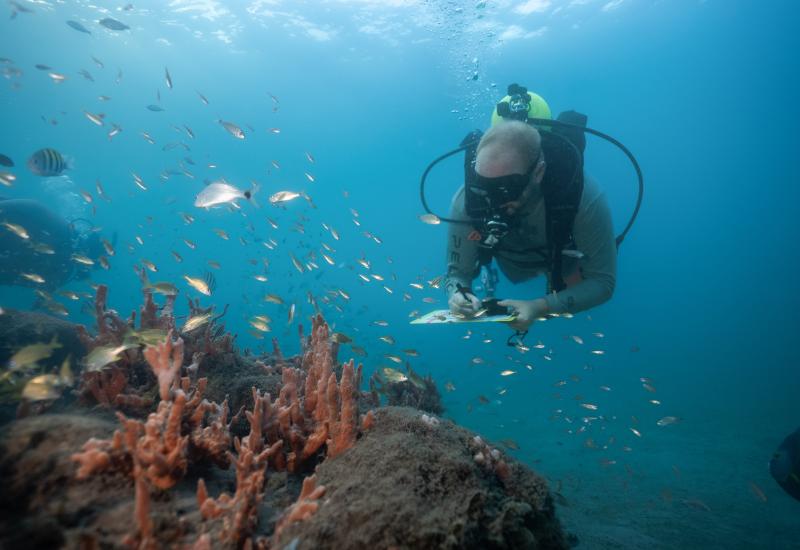How to Get Your Underwater Images Published in Scuba Diving Magazine

Atlantic spadefish Bahamas
Atlantic spadefish Bahamas
Katy Danca Galli
My 2012 New Year’s resolution was to find as many new photographers to add to Scuba Diving magazine’s growing roster as humanly possible.
This has been no easy task. So I’m here now to show you how you — the photographer — can make life easier for photo editors like me who are dying to use your work. My secret? FLICKER, FACEBOOK and sometimes — when I am really desperate — GOOGLE IMAGE SEARCH.
Surprised?
I certainly was. I started out looking for new talent on underwater photo forums like Dive Photo Guide and Wetpixel, but while the underwater images were incredible, the marketing skills of many photographers were not. So to help you make money and save the sanity of my fellow photo editors, I ofter you these four tips. Paste them on your desktop, pin them to your fridge, tattoo them on your heart:
1. My biggest pet-peeve: If you post your images all over the internet, INCLUDE YOUR EMAIL ADDRESS! I have seen a few of you use your email address as your watermark and if I could, I would grant you saint status.
2. If you have a website, make the site name your name. Obscure names like www.epicdiveruniverseextremeanimals.com (not real BTW) are great if you’re trying to be unique, but not so great for getting your name out there.
3. Sites like Flicker and Facebook are fantastic for three reasons: 1) THEY’RE FREE! 2) They include internal messaging capabilities so if I can’t find your email I can get in contact with you regardless, and 3) Most of the time, I have a specific region/animal I am searching for and Flicker allows me to do a batch search, so you can spend less time selecting and transferring images to me. The photographers I work with most are the ones who update their Flicker accounts regularly and properly tag their images with a naming convention so they are searchable; tagging with the location and species name are the best way to have your images found by people like me. Proper naming saves me the step of having to contact you direct for more information on your image.
4. Photoshelter is one of my all-time favorite sites — if you can afford it — because it has the option to enable HRES downloads of your images. (Relax — it’s an invite-only service.) I may need your RAW file too, but if you’re traveling and I need your image asap, this is better than no image at all.
My last words of advice are always, always have your name listed somewhere on the image — in the tag, in the metadata, or in the file name. If you do nothing else, this will at least give me a place to start so I can look for your name and hope I find your email address somewhere on the internet.

Katy Danca GalliAtlantic spadefish Bahamas
My 2012 New Year’s resolution was to find as many new photographers to add to Scuba Diving magazine’s growing roster as humanly possible.
This has been no easy task. So I’m here now to show you how you — the photographer — can make life easier for photo editors like me who are dying to use your work. My secret? FLICKER, FACEBOOK and sometimes — when I am really desperate — GOOGLE IMAGE SEARCH.
Surprised?
I certainly was. I started out looking for new talent on underwater photo forums like Dive Photo Guide and Wetpixel, but while the underwater images were incredible, the marketing skills of many photographers were not. So to help you make money and save the sanity of my fellow photo editors, I ofter you these four tips. Paste them on your desktop, pin them to your fridge, tattoo them on your heart:
1. My biggest pet-peeve: If you post your images all over the internet, INCLUDE YOUR EMAIL ADDRESS! I have seen a few of you use your email address as your watermark and if I could, I would grant you saint status.
2. If you have a website, make the site name your name. Obscure names like www.epicdiveruniverseextremeanimals.com (not real BTW) are great if you’re trying to be unique, but not so great for getting your name out there.
3. Sites like Flicker and Facebook are fantastic for three reasons: 1) THEY’RE FREE! 2) They include internal messaging capabilities so if I can’t find your email I can get in contact with you regardless, and 3) Most of the time, I have a specific region/animal I am searching for and Flicker allows me to do a batch search, so you can spend less time selecting and transferring images to me. The photographers I work with most are the ones who update their Flicker accounts regularly and properly tag their images with a naming convention so they are searchable; tagging with the location and species name are the best way to have your images found by people like me. Proper naming saves me the step of having to contact you direct for more information on your image.
4. Photoshelter is one of my all-time favorite sites — if you can afford it — because it has the option to enable HRES downloads of your images. (Relax — it’s an invite-only service.) I may need your RAW file too, but if you’re traveling and I need your image asap, this is better than no image at all.
My last words of advice are always, always have your name listed somewhere on the image — in the tag, in the metadata, or in the file name. If you do nothing else, this will at least give me a place to start so I can look for your name and hope I find your email address somewhere on the internet.








